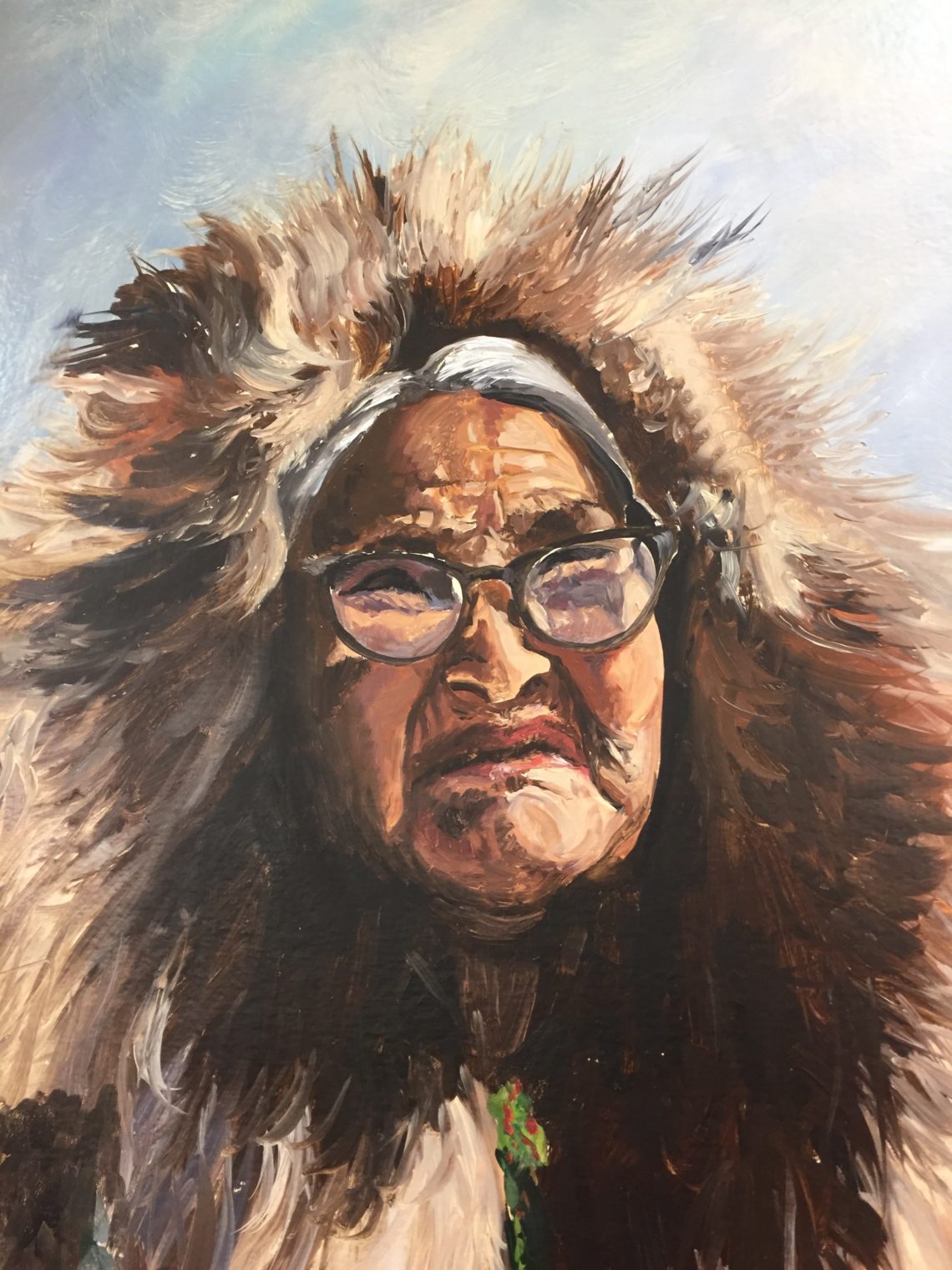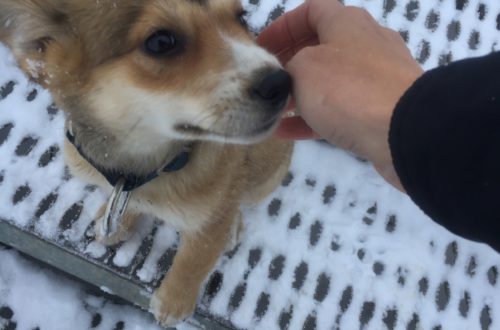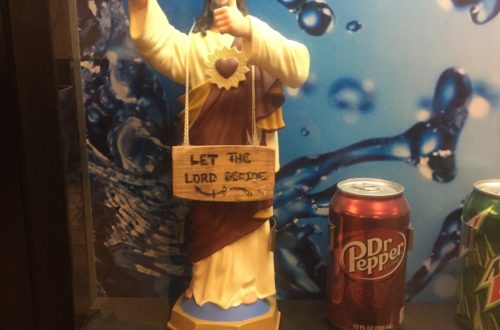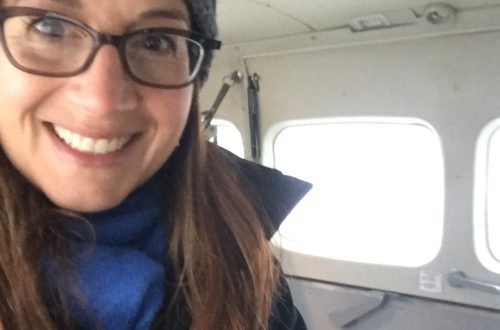
Noorvik, Alaska (2/5)
All of the villages we visit are above the Arctic Circle. What does that mean?
The Arctic Circle is the most northerly of the abstract five major circles of latitude shown on maps of the Earth. It marks the northernmost point at which the noon sun is just visible on the northern winter solstice and the southernmost point at which the midnight sun is just visible on the northern summer solstice. North of the Arctic Circle, the sun is above the horizon for twenty-four continuous hours at least once per year, therefore visible at midnight, and below the horizon for twenty-four continuous hours at least once per year, therefore not visible at noon.
Some scientists define the Arctic as the area where the landscape is frozen and dotted with shrubs and lichens. Other researchers define the Arctic based on temperature, which includes any locations in high latitudes where the average daily summer temperature doesn’t rise above 50 degrees Fahrenheit.
However you define it, it is damn COLD.
Our first stop is Noorvik. In Alaska bush country, there are gravel runways, which require specific pilot training to maneuver. The landscape, as far as you can see and in every direction, is flat tundra, with some mountain ranges in the distance. Townspeople are waiting at the runway, sitting on snow machines with their tow-behind cart waiting for luggage. Sometimes there are trucks, but it depends on the village. Most villages don’t have roads, but a single path leading to the village from the airstrip. Noorvik has streets wide enough for trucks.
One of the teachers from the school picks us up in a very dirty, very beat-up van. As he opens the back doors to stash our luggage, a basketball bounces out onto the snow. He knows Julie from prior visits and they developed a friendship. Julie is surprised to see him and happily embraces him. Last she heard, he moved to Minnesota to try his heart at a love that ultimately fizzled. He returned to heal where he was happy, in Noorvik.
The teacher drives to the school, which houses kindergarten through twelfth grade. We unload our equipment- one 50 lb bag each of personal items, two 50 lb bags each of optical equipment, and a carry-on backpack for each of us for a total of six large pieces of luggage and two backpacks. The total weight is approximately 350lbs. Any offered help is welcome, as there are too many bags and not enough upper body strength. We wrangle some older school kids and stack our stuff in the library.
If you watch the reality show Life Below Zero on the National Geographic Channel, you know Noorvik. The Hailstone family lives here. On the National Geographic website, Chip Hailstone narrates a tour of the village and describes life in Noorvik. We sleep, eat, kill time, and perform eye exams in the school seen in the show. When the show crew comes to film, they stay at the school too, because it is the only lodging option. The school charges an overnight fee.
To arrive where I stand, I was on a plane for 20 hours, but endured 30 travel hours since leaving Philadelphia. Oddly, I’m not tired, but energized because this experience is so invigorating. But I am HUNGRY!
Lunch consists of two corndogs, which I never ate before. Right now, this is the best-tasting meal of my life. They are crunchy, meaty (although probably not actual meat), salty, completely processed, and perfectly satisfying. They are portable, skewered on a stick. I doubt I would feel the same if offered them at home, but here, they are delicious! Recently, the state of Alaska added a basic salad bar to the school lunch, which includes lettuce, spinach, and tomatoes. I don’t yet understand why this is such a huge deal to the natives. Also, I didn’t comprehend why the kids were going crazy for the stack of unappetizing, pale apples for dessert.
Adult villagers can buy breakfast and lunch at the school, both to dine in and to take out. It isn’t odd to see a table of small children peppered with eighty-year-old grandparents or forty-year-old fathers in work overalls.
The youngest children are fascinated with Julie and me, the obvious foreigners. They come within three inches and say, “What is your name?”, “Why are you here?”, “I like apples.”, and “Sit by ME!”. When you sit, they move closer and squeeze their faces right up to yours. Most of their little noses are dripping with green snot. They snuggle in as close as you allow. They are adorable, lovable, and yet slightly repulsive.
Julie and I return to the library after we finish eating. We settle at an out-of-the-way table. A remote teacher in Anchorage is leading the daily Skype session. The teacher is set up as the main hub and has different villages on different screens in front of him. He calls on the students by looking toward the appropriate camera and calling “Hey, Akna in Buckland, what is that answer?” or “Pilip in Noorvik, do you have that problem completed?” The students wave frantically when they want to be noticed. They hide easily when they don’t.
The library is disheveled, with books strewn everywhere. The disorder bothers the OCD in my personality. We have a few hours until the eye exams start and I use the time to arrange the books in a more organized fashion. It’s been a long time since I was in an elementary/high school library and the books resurrect many pleasant memories.
Julie tells me that we should stock up on supplies while we have time, so we bundle up and walk the half-mile to the native store. There is no sign on the building; you just have to know. Inside, there are three isles filled with ONLY processed food. Canned food and jarred food, packaged chips, crackers, and cookies are prevalent. Processed cereal and soup are abundant. There is NO fresh produce, only expired milk, NO fruit, nothing non-processed. Now I understand the children’s excitement over the salad bar and apples. It is like shopping in a 1970s rural gas station. Top-loading white freezers line the back wall and are stocked with frozen pizza, corndogs, and TV dinners. I purchase some pickles, two cans of vegetable soup, a can of peaches and a rare bag of trail mix. Luckily, I hauled many bags of dried fruit, Kind bars, nuts, and oatmeal across the country.
Walking around the village, it’s common to see freshly-killed animals draped over wooden sawhorses. We see a few caribou carcasses, headless and hoove-less, awaiting processing. While disturbing at first, it gives me hope for the local diet. According to a government notice posted in the native store and dated 2012, throwing animal carcasses into the dumpsters is prohibited. I don’t know what they do with them.
Soon enough, it’s time for the eye clinic. Julie tells me that most natives have government-issued vision benefits, which renew at the start of every year. In January, the villagers are excited to get new glasses and it’s a busy month. As the year wanes on, the flow becomes less steady. The current month of November is historically slow. We see about five patients in the seven hours we are “open.”
After the clinic hours are over, we inquire about sleeping arrangements. Luxuriously, this school has two mattresses and a reclining chair for us to choose from. We each set up our individual sleeping space in the most comfortable configuration we can manage. I put a mattress on the floor against a wall of books, place my sleeping bag and travel pillow on top, and clip a halogen light on the chalk tray of the blackboard above my head. I plug in my computer and headphones and join the school’s wifi. Before leaving home, I downloaded shows to watch. I didn’t expect wifi for the entire trip and am pleasantly surprised that this village has it. Snuggling into my bag, I settle into a new show. I am asleep before the opening theme song ends.
My Verizon cell service hasn’t worked since we left Anchorage. The locals have the Alaskan carrier that provides sporadic service. Julie has that carrier, but still has difficulty getting texts and making calls. She stands outside to get a signal. The messaging app “What’s App” uses wifi to transmit messages, so I am happy to be able to update my family.
Kotzebue is the hub for the villages we visit on this trip. We fly back there to catch flights to the next villages. Our flight from Noorvik to Kotzebue starts with limited visibility and quickly deteriorates to zero visibility. I’m not concerned, as movies teach me that pilots often and easily fly with only instruments without visibility. Apparently, the movies are wrong, at least for little planes. In the Alaska bush, the airline companies ground their planes for poor visibility. The controllers are concerned enough about our flight to have an ambulance waiting on the runway for our landing. I’m not aware of this until after my feet touch the tarmac. I try to forget the ambulance as we make our way to our next flight to Buckland.


You May Also Like

Sad Alaska (4/5)
January 25, 2018
Happy Alaska (5/5)
January 26, 2018
